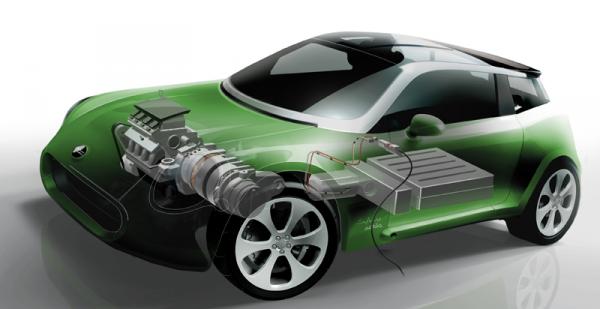Engineering resins to play starring role in next-generation hybrid, electric vehicles
New automotive grade offerings in the Noryl modified polyphenylene oxide (PPO) and Valox polybutylene terephthalate (PBT) portfolios of Sabic Innovative Plastics (Pittsfield, MA) are designed to help automakers create alternative power train solutions by displacing weight and increasing performance for hybrid, plug-in hybrid (PHEV), and battery electric vehicles (BEV) according to the supplier.
May 7, 2010
New automotive grade offerings in the Noryl modified polyphenylene oxide (PPO) and Valox polybutylene terephthalate (PBT) portfolios of Sabic Innovative Plastics (Pittsfield, MA) are designed to help automakers create alternative power train solutions by displacing weight and increasing performance for hybrid, plug-in hybrid (PHEV), and battery electric vehicles (BEV) according to the supplier.
|
Hybrid electric vehicles are projected to capture a significant share of the global automotive industry by 2015 according to V. Umamaheswaran, director of products and marketing at Sabic Innovative Plastics, Automotive. But although hybrid, plug-in hybrid, and battery electric vehicles can reduce fuel consumption and emissions, the additional weight of battery packs—up to 300 kg on a mid-sized car—can undermine environmental benefits. To reduce weight, plastics can replace steel in different applications such as battery housings, an approach that is already being taken with leading auto manufacturers. Noryl and Valox from are said to be excellent choices for battery components, including frames and housings. These resins also offer significant weight reduction, chemical and temperature resistance, dimensional stability and flame retardance.
Unlike traditional automotive lead-acid batteries, new higher energy density battery packs are composed of many separate battery cells—up to 200 in some cases—and the structure around these cells and their electronic control systems must maintain stringent dimensional stability. With so many stacked components in limited spaces, even a little instability could potentially cause misfits, leakage or possible damage due to limited clearances.
Noryl and Noryl GTX (the latter a blend of polyamide (PA) and PPE) resins offer lower initial mold shrink and warp; lower moisture uptake that minimizes dimensional and mechanical property changes; and a lower and more stable coefficient of thermal expansion (CTE). These high-end properties help keep the performance of the battery pack system stable regardless of potential changes in environment such as temperature, humidity, and load.
Electric vehicle offerings
BEVs are also becoming increasingly attractive with the advancement of new lithium ion and lithium polymer batteries that have higher power and energy density. In general, batteries operate best at controlled temperatures, requiring vital temperature management of the battery packs. To cool them, liquid cooling often replaces air-cooling for greater efficiency. As a result, these liquids require chemically resistant, high-performance engineering thermoplastic materials. Further, if power is withdrawn from a battery, it will heat up - thus requiring materials with appropriate heat resistance. Sabic Innovative Plastics offers a number of materials with these properties, including Ultem polyetherimide (PEI) resin with high heat resistance and inherent flame retardance, and Valox PBT resin with high heat and chemical resistance.
Furthermore, in HEVs, the higher the voltage, the more important electromagnetic interference/radio frequency interference (EMI/RFI) shielding becomes to avoid potential interference from electronic components such as inverters, electronic control units and the battery management system. LNP Faradex compounds based on various resins and their blends from Sabic Innovative Plastics provide exceptional EMI/RFI shielding properties without the heavy weight of metal layers or the environmental risks associate with metallization.
You May Also Like



